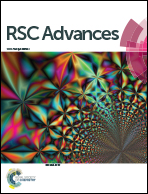Exploring bridging effect on first hyperpolarizability
Abstract
A number of tetradehydrodinaphtho[10]annulene derivatives with varying charge transferring conduits between two naphthalene rings have been considered for the theoretical study of electronic structure and first hyperpolarizability. The BHHLYP, CAM-B3LYP and M06-2X methods along with the 6-311++G(d,p) basis set are used to calculate first hyperpolarizability by analytical evaluation of electric dipole second derivative. The results obtained by different methods are found to be consistent. The ground state polarity and the first hyperpolarizability of tetradehydrodinaphtho[10]annulene can be strongly enhanced by suitable modification of acetylene linkages. Using different ring structures containing electronegative atom(s) at the bridging position the extent of the longitudinal charge transfer and the magnitude of first hyperpolarizability can be enhanced strongly. The furan ring and the heteroazulene ring has been found to be the most effective bridging moieties to enhance the magnitude of static first hyperpolarizability. The variation of first hyperpolarizability has been explained satisfactorily in terms of the two state calculated spectroscopic properties.


 Please wait while we load your content...
Please wait while we load your content...